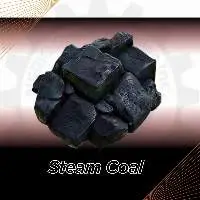
Diesel oil en590 ulsd ppm10, jet a1 fuel, diesel gas d2, mazut m100/99, aviation kerosene colonial grade 54, virgin fuel oil d6, export blend crude gost 51 858 2002 / gost 9965 76, liquefied petroleum gas (lpg), liquefied natural gas (lng), fuel oil cst 180, urea 46% prilled & granular, sulphur granular, diesel gas oil ultra low sulphur diesel, petroleum coke, light cycle oil (lco), bitumen grade 60/70 and 80/100, automotive gas oil (ago). bentonite: 250 types of bentonite. please send your specifications. coal: eight types of coal. please send your specifications..

Crude oil is a naturally occurring unrefined petroleum product that is made up of a mixture of hydrocarbons and other organic compounds It is the raw material that is used to produce a variety of refined petroleum products including gasoline diesel fuel and heating oil Crude oil is extracted from the earth through drilling and is transported to refineries where it is processed and refined into various products Crude oil has a wide range of physical properties Crude oil is made up of 845 carbon 13 hydrogen 13 sulfur and less than 1 each of nitrogen oxygen metals and salts REBCO is a specific type of crude oil that is produced in Russia and the surrounding regions It is a highquality crude oil that is known for its low sulfur content and low viscosity The middle east light crude oil is also highquality crude oil The GOST 51 8582002 specification refers to the Russian standard for REBCO which outlines the crude oils characteristics and performance requirements Gost 51 858 2002 offers from exporters manufacturers suppliers wholesalers and distributors globally by price and quality of the oil REBCO is an important commodity in the global energy market and it is carefully regulated to ensure that it meets the necessary standards for safety and performance Maximum Sulfur Content 18 Paraffin Content 60 Maximum Water Sediment Content 12 Distillation Weight 21 Up to 200 N min 21 Up to 300 N min 41 Up to 350 N min 50 and Maximum salts content MGL 100
Product: UREA N46 Agricultural Grade Nitrogen: 46% minimum Moisture: 0.5 max Free amonia: 160 PXT PPM maximum BIURET: 1.0% maximum Harmful substances: 100% free from harmful substances Melting point: 132 degree Celsius Granulation: 1mm to 4mm 90% minimum Color: White standard or white pure Odor: Odorless Boiling: Decomposes before boiling Radiation: Non-radioactive Floatability in water: Sinks and mixes Molecular weight: 60.065 Fertilizer granular: 94-96%min Prill: 96%max Fisher: 0.3%
Steam Coal, also known as thermal coal, is primarily used for power generation and industrial heating. With its high energy content and combustion efficiency, it is a reliable source of fuel for steam boilers and electricity production, providing consistent performance in energy-intensive industries.

